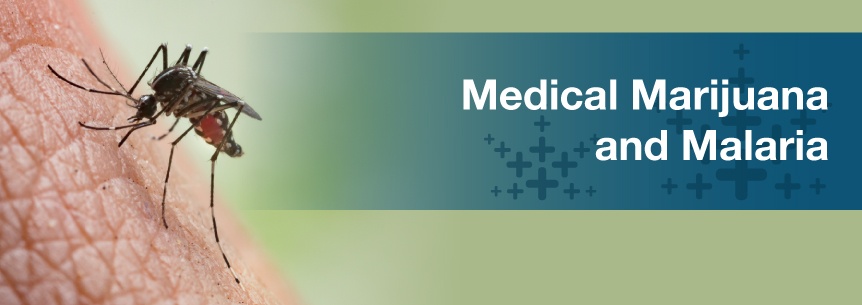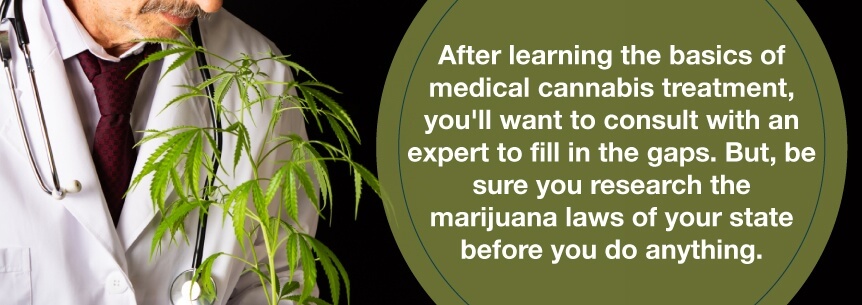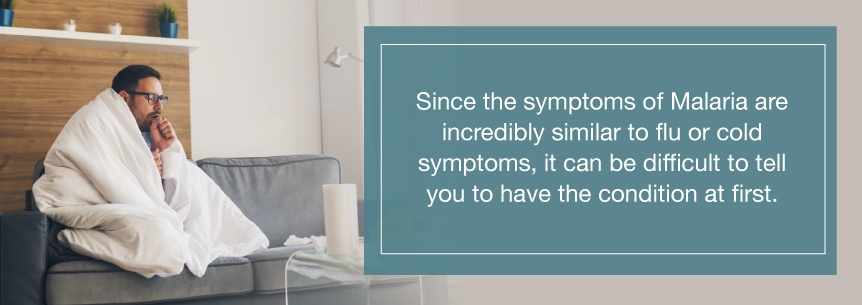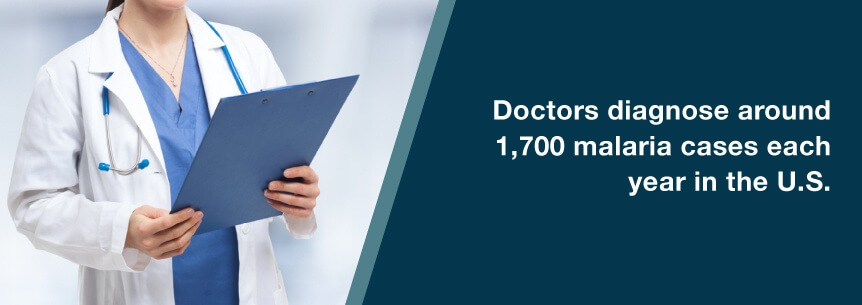
If you have malaria, it’s not something you want to leave untreated. In addition to being potentially deadly, the symptoms of the disease are anything but pleasant. While there is a treatment for malaria, you can still help ease some of your symptoms like joint pain, headache, vomiting, nausea, anxiety, and depression with medical marijuana.
Recent scientific efforts praise CBD as modern medicine’s “developing champion.” CBD can be synthetically designed in a lab in the form of oil but is a naturally occurring phytocannabinoid in the marijuana plant. CBD is frequently chosen as a preferred medical treatment since it doesn’t have the psychoactive qualities of THC, another cannabinoid. It also has shown to have multitudinous benefits for medication in many areas.

It’s known well for its immune-supportive and anti-inflammatory properties, and people favor it for its gentler interaction with the body’s endocannabinoid system, meaning it’s tough to overdose and doesn’t display any harmful side effects. Many acknowledge CBD as an incredibly effective and safe medication. It’s flexible in how you can administer it to both adults and children, according to prescription guidelines.
Studies show medical cannabis or its CBD might be successful in preserving and maybe even “rescuing” important brain function in people who have struggled with cerebral malaria.
CBD’s neuroprotective properties have helped prevent anxiety and memory deficits in lab mice, according to research the journal Neuroscience published in March of 2015. The research showed mice with the malaria infection that didn’t receive CBD treatment suffered from an increase in anxiety and memory dysfunction and inflammation in the prefrontal cortex and hippocampus regions of the brain. The mice that received the CBD treatment showed:
The research also showed the mice with malaria infection that received CBD treatment also regained full cognitive function and lived longer, unlike the mice that didn’t receive CBD. But, the study did show there was no recovery of motor function in either group of mice.
Results of the study indicate CBD has neuroprotective effects and could be beneficial as an additional treatment for preventing neurological symptoms that follow this disease.
Cannabis can be used to treat many of malaria’s symptoms such as:
Medical weed can do wonders for joint pain. CBD and THC, the two active compounds in cannabis, especially help treat joint pain. The herb provides you with increased dexterity, natural management of pain and overall improved quality of life.
CBD positively impacts your immune system and naturally helps with autoimmune disorders like rheumatoid arthritis. A study appearing in the journal Rheumatology showed individuals with arthritis has unusually high CBD receptor levels in the tissue of their joints. By using medical marijuana for malaria treatment, they were able to tackle inflammation through their joints by activating the CB2 receptor pathway.
Findings before 1937 recorded in research suggest a deficit in endocannabinoids or an endocannabinoid system dysfunction could link to the development of headaches like migraines. Your endocannabinoid system helps to regulate various functions such as:
THC, CBD and other cannabinoids in cannabis interact with the receptors of your endocannabinoid system, particularly the CB1 receptor to stop inflammation from causing headache pain.
In a study in 1975, Zinberg, Sallan, and Frei found all 20 of their study participants experienced nausea relief after using certain types of THC.
Despite the severity of an individual’s case, anxiety symptoms can be debilitating and impact the person’s ability to perform their everyday functions severely. As scientists continue developing an understanding of how powerful CBD products are, more individuals are turning to CBD to find daily relief from their anxiety.
Individuals with chronic conditions also often suffer from depression. Medical marijuana helps them find relief from their depressive feelings.
The symptoms of malaria can be debilitating and being able to find any amount of relief can help a patient get through this hard time. Some effective medical marijuana and malaria strains you may want to try to help you cope with some of your symptoms are:
Here are a few strains to try to alleviate joint pain and inflammation.
These strains are suitable for reducing nausea.
There are many strains capable of easing headaches.
Here are some strains that lessen anxiety.
These are some strains to try to reduce depressive symptoms.
When it comes to relieving your symptoms, not only is it essential to find the right strains, but you’ll also want to find which delivery method gives you the most benefit. Below are some common medical cannabis consumption methods for malaria:
Smoking is not the ideal choice to take your medical cannabis due to its potentially harmful respiratory effects.
Knowledge is power and having the right information is an important first step to getting off to a good start with your cannabis treatment for malaria. After learning the basics of medical cannabis treatment, you’ll want to consult with an expert to fill in the gaps. But, be sure you research the marijuana laws of your state before you do anything.

Once you learn your state laws on cannabis treatment and you find out you qualify, you’ll want to find a primary dispensary to purchase your cannabis products. You might have to designate a dispensary when applying, depending on your state.
Before you can purchase marijuana at a dispensary, you need a medical recommendation from a licensed doctor. Your primary care doctor might not be knowledgeable enough on medical cannabis to give you that recommendation. No worries — schedule an appointment with one of our qualified marijuana doctors here at Marijuana Doctors for your online consultation. They’ll walk you through your next steps and answer all your questions.
Find A Doctor Find A Dispensary
Malaria is a disease parasite-infected mosquitoes transmit when they bite you. It produces recurrent attacks of fever and chills and kills around 600,000 people every year.
Although malaria isn’t common in temperate climates, it’s still prevalent in subtropical and tropical countries. World health officials are working hard to reduce the incidence of the disease by providing bed nets to help protect individuals from being bit by mosquitos while they’re sleeping. All over the world, scientists are working to create a vaccine that will prevent malaria.
If you are planning on traveling to an area where the disease is common, make sure you take preventive medication while on your trip and after. The problem is a lot of malaria parasites have become immune to many of the common medications used for treating the disease.
Malaria symptoms typically begin around 10 to 15 days after an infected mosquito bites you. However, there are some things you should take into consideration.
Since the symptoms are incredibly similar to flu or cold symptoms, it can be difficult to tell you to have the condition at first. Symptoms of malaria don’t always appear until after two weeks, mainly if it’s a P. vivax, or free-living parasitic, infection.

Individuals living in locations with cases of malaria might become partly immune after exposure to the disease throughout their lives. A blood test can determine if you have malaria or not. Along with shaking chills, high fever and sweating, other symptoms could include:
You can even go into a coma with malaria.
If children become sick with severe malaria, they might get anemia if they lose too many red blood cells. They could also have difficulty breathing. Some might get cerebral malaria, although rare, where they suffer from brain damage from swelling.
Malaria occurs when the female Anopheles mosquito bites you and infects your body with Plasmodium, a parasitic microscopic animal. The Anopheles mosquito is the only mosquito that can transmit malaria.
When an infected mosquito bites a human, the parasite enters their bloodstream, infecting the red blood cells and multiplying further. Some may remain in the liver and won’t be released until later, resulting in recurrence.
The mosquito can develop the parasite depending on certain factors with ambient temperatures and humidity being the most important.
Unaffected mosquitos can also become infected if they feed on infected people. This begins the cycle all over again.
Five Plasmodium parasite species can affect humans. Researchers and doctors consider a couple of them to be the most dangerous. These are:
Falciparum causes most complications. One is cerebral malaria, which causes coma, multiple seizures or altered mental states. It’s the most common cause of death in malaria patients when left untreated.
Even if treated, 20 percent of adults and 15 percent of children who develop this complication die. Cerebral malaria symptoms are similar to the symptoms of toxic encephalopathy. P. falciparum infection can cause complications like:
There’s a complex potential association between mental disorders and malaria. Malaria, being a debilitating physical condition, might predispose you to depression, and vice versa — depression can predispose you to malaria by altering your behavior and affecting immunity.
Depression might hinder both malaria treatment and recovery. And, having malaria might hinder depression treatment and recovery. African doctors often misdiagnose complaints of general malaise and fatigue as malaria when the individual doesn’t even have a parasite but is suffering from depression.
In the past, mild intermittent or chronic malaria infection has also become linked with neurasthenia symptoms, including:
Facts related to malaria according to the Centers for Disease Control and Prevention (CDC), include:

Literature notes malaria or a condition that resembles malaria for over 4,000 years. Ancient Chinese medical writings described malaria symptoms. The Nei Ching, from 2700 B.C., describes various characteristic symptoms of what later would be called malaria.
Hippocrates made a note of the principal symptoms.
The goal of malaria treatment is to rid the Plasmodium parasite from the individual’s bloodstream. Individuals with no symptoms might receive treatment for infection to decrease the transmission of the disease in the surrounding population.
The World Health Organization (WHO) recommends artemisinin-based combination therapy (ACT) to treat uncomplicated malaria. Artemisinin comes from the Artemisia annua plant, also referred to as sweet wormwood. It’s known best for its ability to quickly reduce the Plasmodium parasite concentration in the bloodstream.
The therapy involves ACT combined with a partner medication. Artemisinin’s role is to decrease how many parasites there are in the first three days of infection, allowing the partner medications to eliminate the rest.
Expanding ACT treatment access worldwide has helped decrease malaria’s impact, but the condition is starting to become increasingly resistant to ACT’s effects. In locations where malaria is ACT-resistant, treatment needs to involve an effective partner medication.
The WHO has made the statement no artemisinin alternatives are likely to become available for a few years.
Vaccines for malaria have been a research priority for a long time, but just recently the WHO announced a vaccine for malaria would make the advance to studies of implementation. Malaria vaccines currently in clinical trials or under preclinical development include:
These vaccines target the parasite before it invades the red blood cells.
These vaccines treat malaria after it becomes a blood disease.
These vaccines target mosquitos and are called transmission-blocking vaccines (TBVs).